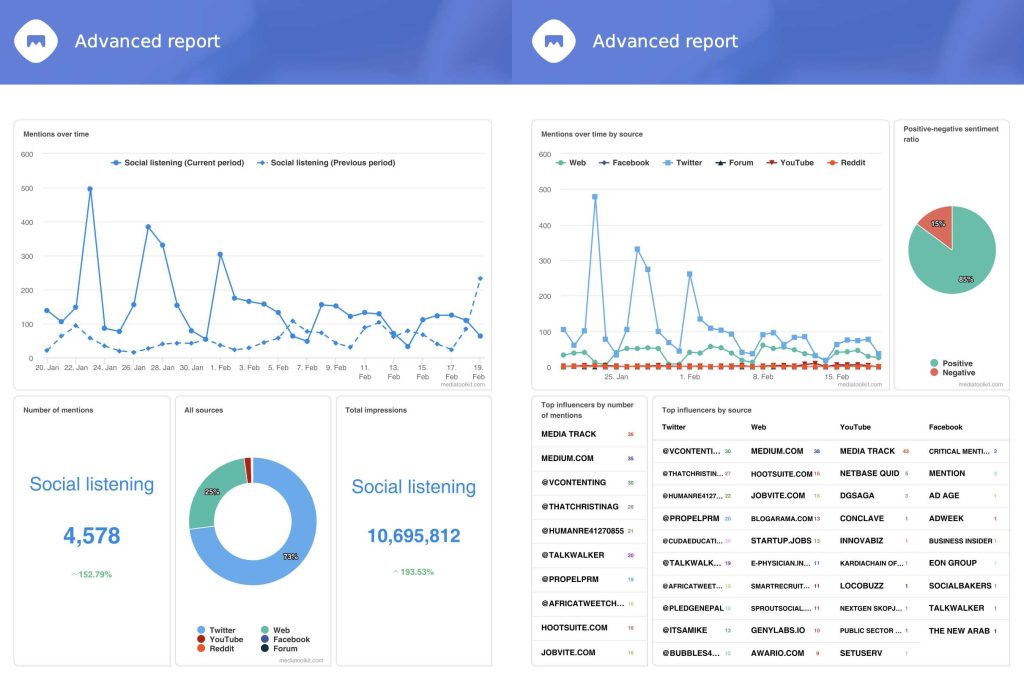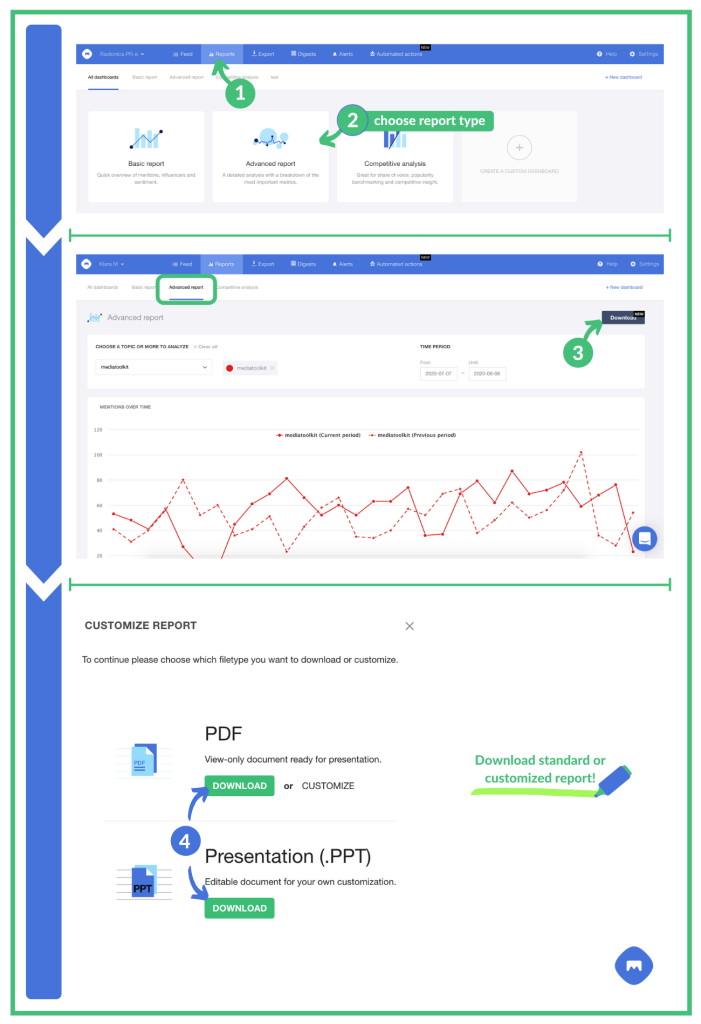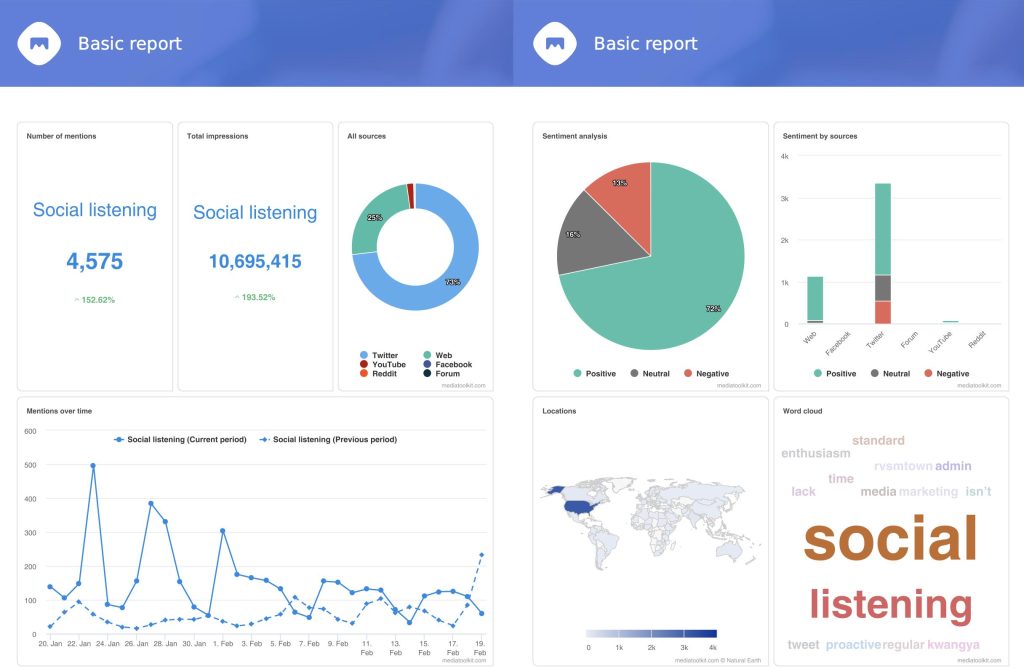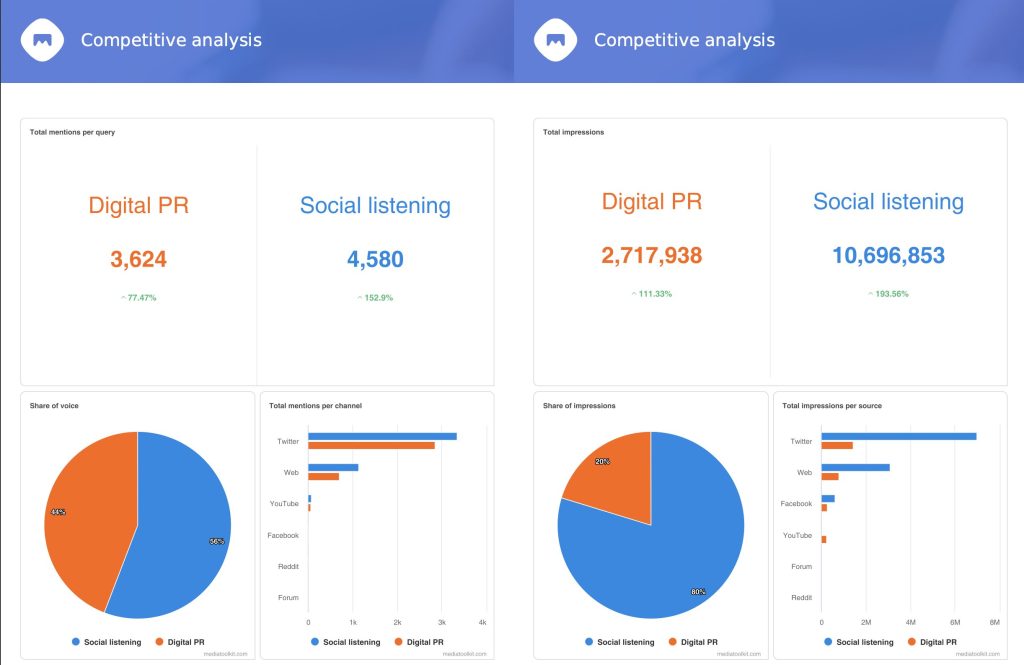One of the most important aspects of media monitoring tools is the ability to collect large amounts of data and transform it into comprehensive media monitoring reports. As a result, creating reports used to take up a lot of time and effort.
Now you can do it in a matter of seconds.
If you’re a PR or a marketing professional with a question mark above your head, stick around for just a bit more. And let us convince you that this is really possible.
As you know, online conversations and trends, especially on social media, are constantly changing. Therefore, keeping up with everything and analyzing them can be exhausting and time-consuming.
Enter media monitoring tools.
Besides tracking mentions, they provide you with exceptional analyzing and reporting features that can make your job easier. With that in mind, read on to find out how Determ Reports can ease your daily workload and why you should implement them in your work asap.
Benefits of Using Determ Reports
Let’s start with the most obvious ones – saving time and money. With reports being just a few clicks away, you’ll be able to shift your focus on more urgent tasks of the day. Most importantly, you’ll have a clear overview of your data in one place. Because of that, it will be much easier for you to share and present your reports to your bosses, colleagues, investors, clients, etc.

These reports provide you with valuable insights about:
- ongoing campaigns,
- brand reputation,
- crisis management,
- competitors,
- strengths and weaknesses,
- influencers,
- customers…
Apart from that, media monitoring reports can help you conduct a thorough market research. In that sense, you can narrow down your search to a specific country and a specific language, find out valuable info about the sentiment present on specific channels and analyze how successful your competitor’s campaigns are.
In addition, this information can also be useful for your content creation. To be more precise, you can prepare a detailed communication plan based on the media monitoring report. In other words, you can easily see what type of communication works on which channel and what kind of sentiment it provokes, as well as the topics that are usually the most interesting and plan accordingly.
Read 6 Reasons Why You Should Use Media Monitoring
How to Create a Media Monitoring Report Using Determ
To create a media monitoring report, you first need to set up the keywords you wish to track. Also, you need to decide which metrics are vital for your reports.
The important thing to note is that you should set up your keywords at least 24 hours before creating the report. In that way the tool will have enough time to collect more mentions which will make your report more reliable.
In Determ, you can create your report in a few easy steps. You simply click on the reports section in the top toolbar, choose the type of report you want and download it.
Following that, you can download your reports in PDF or .PPT format. Also, you can personalize your reports with your logo and brand colors, but more on that later.

Types of Media Monitoring Reports
With Determ you can create different types of reports, depending on your needs. There are three predefined reports (Basic, Advanced, and Competitive) and an option to create your report from scratch with predefined charts or custom charts.
Read 5 PR Report Templates and Hacks to Instantly Prove the Value of Your Work

Predefined dashboards
The first three – Basic and Advanced Report and Competitive Analysis are predefined dashboards. Let’s see what each of them encompasses.
Basic reports
You can use Basic Report for a quick overview of mentions, sentiment, and influencers on a daily basis.
It contains information about:
- Number of mentions
- Total impressions
- All sources
- Mentions over time
- Sentiment Analysis
- Sentiment by sources
- Locations
- Word Cloud

Advanced report
Advanced Report is a detailed analysis with a breakdown of the most important metrics. This type of report is great for a deeper analysis of your brand and efforts.
In there you can find information about:
- Mentions over time
- Total Number of mentions
- Top sources
- Top impressions – the sum of reach
- Mentions over time by source
- Positive/ neutral/ negative sentiment ratio
- Top influencers by number of mentions
- Top influencers by source
- Locations (map)
- Top locations
- Top languages
- Sentiment ratio (automated analysis)
- Sentiment over time (automated analysis)
- Top influencers by sentiment (automated analysis) – positive and negative
- Sentiment ratio by channel
- Word cloud

Competitive analysis
Competitive analysis is an excellent way to get competitive insight and benchmarking. It contains information such as:
- Total mentions per query
- Share of Voice
- Total mentions per channel
- Total impressions
- Share of impressions
- Mentions over time for multiple queries
- Top influencers
- Number of mentions per sentiment
- Mentions by channel
It’s important to note that even predefined reports are customizable. In other words, you can add/remove/change graphs depending on what type of data and visual presentation you need and prefer.
Read Competitor Analysis: Stay Ahead of Competition with Media Monitoring

Custom reports and custom charts
There are three ways you can customize your reports:
- Customizing predefined dashboards
- Creating custom reports from scratch with predefined charts
- Creating custom reports from scratch with custom charts
Let’s dissect them one by one.
Customizing predefined dashboards
As we mentioned earlier, this means that you can select, for example, the Basic report, and add a graph with information about Top influencers by the number of mentions. Or you can remove the Word Cloud. Also, you can switch from the pie chart to the donut chart.
Customizing predefined dashboards is great if you only need to do a couple of tweaks in your report. But, if you want to take a step further and customize the reports more, you can do so with custom reports with predefined charts.
Custom reports with predefined charts
If you want to create a custom report from a scratch but don’t feel the need to customize the charts as well, you’ll be able to do so.
Let’s say you’re trying to find the right influencers for your brand. You can create a report that will contain only graphs containing information about influencers (e.g. Top influencers by a number of mentions, Top influencers by source, etc.).
Then, to get a better overview, you can add graphs containing influencers from different competitors. This means that you can get a brand analysis and a competitive analysis all in one report.
Read B2B Influencer Marketing: How To Find Top Niche Influencers
Custom reports with custom charts
Creating this type of report will require a bit more time and advanced analytic skills. Basically, you’re creating every chart by yourself by setting up dimensions, conditions, and other variables.
This option is made for people who need only a specific type of information and want full control over what will their charts show.
For example, let’s take a look at this custom chart. It’s a Share of Voice chart that shows the ratio of the popular Starbucks related topics (by tags). This type of chart shows you which topics are represented the most among your mention.
Branded Reports
All of Determ’s reports can also be easily personalized.
With Branded reports you can:
- Upload your logo
- Change background colors
- Adjust the text color
- Change title and description
- Show/hide page number
- Show/hide the reporting period on the front page.
Read Branded Reports: Elevate and Automate Your PR Reporting
With this feature, you’ll be able to take your reports to another level and have a great asset for building a strong brand image!
Keep in mind that you can only personalize reports in PDF format.
Read Branded Reports: Elevate and Automate Your PR Reporting
Newsletter
This feature helps you inform internal and external stakeholders about relevant online content. Curate a list of articles and posts from your Determ Feed and distribute it to your team, clients, or partners as an email newsletter.
With this new feature, you can:
- Share the latest media coverage about your company
- Highlight reactions to your campaigns, products, or services
- Showcase your company’s content from the web and social media
- Keep everyone posted about your competitors and industry trends
- Select a list of articles or posts by any criteria of your choice.
Additionally, you can section your newsletter and provide comments personalized to every target audience. That way, every stakeholder can easily understand and digest the shared information regardless of background or knowledge.

To Sum Up
Media monitoring reports ought to be an essential part of your decision-making process. And with Determ, they’re easy to make, easy to understand, and highly customizable.
Also, they contain all the relevant data that can steer your brand in the right direction, and help you build relationships with customers, clients, investors, etc. Most importantly, they can keep you out of crisis and get you out of one.
Book a call with one of our experts and start creating your media monitoring reports with Determ!



